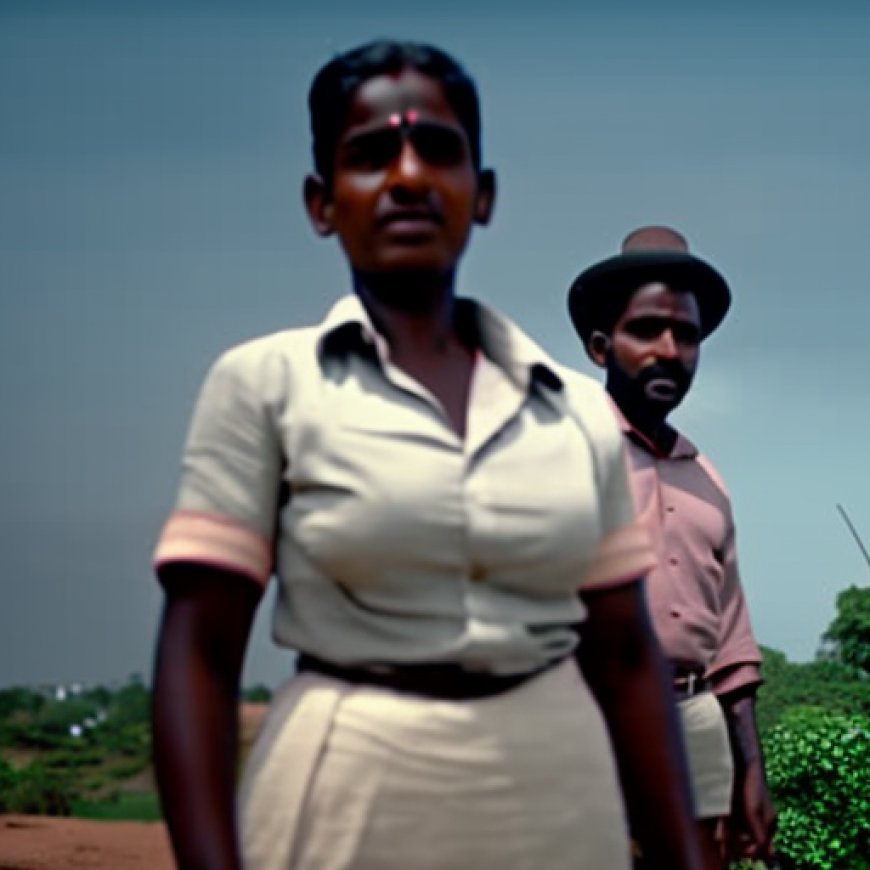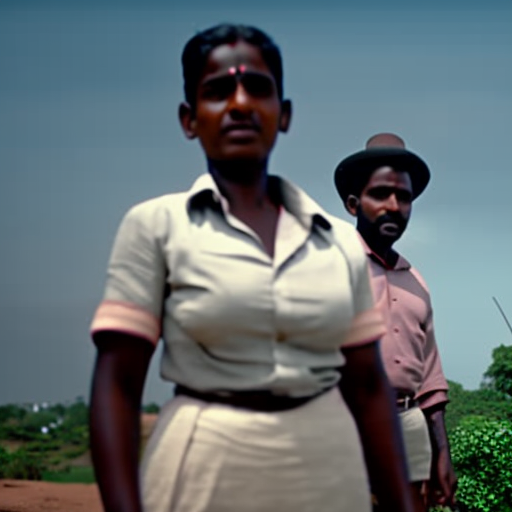ILO report reveals severe gender pay gap in Sri Lankan labour force
ILO report reveals severe gender pay gap in Sri Lankan labour force WSWS


The Gender Pay Gap in Sri Lanka—A Statistical Review with Policy Implications
A report published by the International Labour Organization (ILO) in 2024 titled “The Gender Pay Gap in Sri Lanka—A Statistical Review with Policy Implications” reveals significant disparities between the participation of female and male workers in the labour force and in their wages. The report particularly examines the period between 2013 and 2019.
Labour Force Participation
According to the report in 2019, the country’s labour force was approximately 8.6 million or 59.3 per cent of those of working age. While the male labour force was around 5.6 million or nearly 80 percent of all men in working age, the female labour force was only 3 million, about 40 percent of all females in working age.
“Gender inequalities in participation have persisted in the last decade,” the report stated. “This is consistent with the experience of many other South Asian countries as well as the historical evolution of female labour force participation in Sri Lanka.”
Gender Pay Gaps
The report noted that the gender pay gaps (GPG) were also large between male and female workers. “Average female hourly wages were approximately 27 percent lower than male hourly wages in 2019… The gap is particularly large among wage workers in the informal economy and among those with lower educational attainments.”
“Compared to the global average of about 20 percent, the GPG in Sri Lanka is higher than the global average, and higher than the average for lower-middle income countries,” it added.
Historical Roots of Discrimination
As in many countries, there are historical roots regarding discrimination against women workers in Sri Lanka and their exploitation under low wage and harsh working conditions.
For 200 years, plantation workers, whose first generations were brought from South India beginning in the 19th century under British colonial rule, have faced these conditions.
Exploitation in the Free Trade Zones
Female workers in export-oriented manufacturing sectors in the free trade zones (FTZ) face similar conditions. The majority are young women from rural areas.
According to the Labour Force Survey 2020 conducted by the Department of Census and Statistics, the apparel sector employed nearly 470,000 workers, 70 percent of whom were women. The majority are low-skilled workers such as machine operators, line helpers and cutters. Approximately 33 percent are informal workers in insecure jobs with poor conditions and pay, as compared to only 13 percent of male workers.
The FTZs were established from 1978 under the free market policies of the government of President J.R Jayewardene to attract foreign investment by creating a cheap labour market through the suppression of workers’ social and democratic rights.
Challenges Faced by Workers
A young man working at the Next Garment factory in Katunayake FTZ, near Colombo international airport, explained that he worked in the cutting section while his wife was in the sewing section.
“My basic [monthly] wage is about 39,000 rupees [$US130]. Overall, I get about 70,000 rupees [$US260] with overtime work and allowances and my wife gets about 57,000 rupees. We pay 7,500 rupees in board including electricity and water. At the moment we manage our monthly expenses with difficulty but the situation is getting worse due to the rising cost of living.”
Previously they had worked in a garment factory in Anuradhapura on even lower wages and difficult working conditions. At most he earned 35,000 rupees and was completely exhausted after working the entire month. His wife earned the same very low wage. “We worked two years there. Many young people quit because of low wages and difficult working conditions.”
During 2021‒22, around 150,000 garment workers lost their jobs amid the crisis in the industry triggered by the COVID-19 pandemic. Another 50,000 left their jobs in 2023 because the low wages failed to compensate for the huge prices rises. Nearly 10,000 garment workers lost their jobs in 2022 and 2023 due to the closure of factories.
Call for Action
The trade unions are responsible for the slave labour conditions faced by workers in general in the free trade zones and female workers in particular. Union bureaucrats, who sit on the National Labour Advisory Council with government officials and employers, supported the demands of employers to reduce the workforce and cut wages by half in 2021 and 2022 during the COVID-19 pandemic.
While ILO report reveals the discrimination against and gender gaps facing women workers, it calls for measures to make labour market more flexible so as to fully utilize “the country’s human capital for sustainable and inclusive development” in Sri Lanka’s crisis-ridden capitalist economy. This only means creating the conditions for the greater exploitation of workers—male and female alike—for super profits of foreign and local investors.
The gaps in work opportunities as well as pay and conditions between male and female workers are an integral part of system of capitalist exploitation that ensures lucrative profits for investors. The backwardness of countries of a belated capitalist development like Sri Lanka only compounds the slave labour conditions facing the working class, particularly women workers.
Academics, trade unions and non-government organisations make futile appeals to the government for laws concerning the safety of women workers and their basic rights. President Ranil Wickremesinghe, however, is imposing the harsh austerity agenda demanded by the International Monetary Fund that is slashing the conditions confronting the working class as a whole. Far from enacting laws to safeguard workers, the government is planning to abolish their existing limited legal protection through its New Employment Act (NEA).
SDGs, Targets, and Indicators Analysis
1. Which SDGs are addressed or connected to the issues highlighted in the article?
- SDG 5: Gender Equality
- SDG 8: Decent Work and Economic Growth
- SDG 10: Reduced Inequalities
The article discusses gender inequalities in the labor force and wage gaps between male and female workers in Sri Lanka. These issues are directly connected to SDG 5, which aims to achieve gender equality and empower all women and girls. Additionally, the article highlights the exploitation of workers, particularly female workers, and the need for decent work and economic growth, aligning with SDG 8. Lastly, the article mentions the disparities in work opportunities, pay, and conditions, indicating a need to reduce inequalities, which is a focus of SDG 10.
2. What specific targets under those SDGs can be identified based on the article’s content?
- Target 5.1: End all forms of discrimination against all women and girls
- Target 8.5: By 2030, achieve full and productive employment and decent work for all women and men, including for young people and persons with disabilities, and equal pay for work of equal value
- Target 10.4: Adopt policies, especially fiscal, wage and social protection policies, and progressively achieve greater equality
The article highlights discrimination against women workers in terms of participation in the labor force and wage gaps. This aligns with Target 5.1 of SDG 5, which aims to end all forms of discrimination against women and girls. The article also emphasizes the need for decent work and equal pay, which corresponds to Target 8.5 of SDG 8. Additionally, the article mentions the disparities in pay and conditions, indicating a need for policies to achieve greater equality, aligning with Target 10.4 of SDG 10.
3. Are there any indicators mentioned or implied in the article that can be used to measure progress towards the identified targets?
- Gender pay gap (GPG)
- Female labor force participation rate
- Proportion of women workers in the informal economy
- Percentage of women workers in the apparel sector
- Percentage of women workers in insecure jobs
The article mentions several indicators that can be used to measure progress towards the identified targets. The gender pay gap (GPG) is explicitly mentioned as an indicator of gender inequality in wages. The female labor force participation rate is also mentioned, indicating the level of participation and representation of women in the labor force. The proportion of women workers in the informal economy is highlighted, reflecting the vulnerability and lack of formal employment opportunities for women. Additionally, the article provides statistics on the percentage of women workers in the apparel sector and the percentage of women workers in insecure jobs, which are relevant indicators for measuring progress towards achieving decent work and reducing inequalities.
Table: SDGs, Targets, and Indicators
| SDGs | Targets | Indicators |
|---|---|---|
| SDG 5: Gender Equality | Target 5.1: End all forms of discrimination against all women and girls | – Gender pay gap (GPG) – Female labor force participation rate – Proportion of women workers in the informal economy |
| SDG 8: Decent Work and Economic Growth | Target 8.5: By 2030, achieve full and productive employment and decent work for all women and men, including for young people and persons with disabilities, and equal pay for work of equal value | – Gender pay gap (GPG) – Percentage of women workers in the apparel sector – Percentage of women workers in insecure jobs |
| SDG 10: Reduced Inequalities | Target 10.4: Adopt policies, especially fiscal, wage and social protection policies, and progressively achieve greater equality | – Gender pay gap (GPG) – Proportion of women workers in the informal economy – Percentage of women workers in insecure jobs |
Behold! This splendid article springs forth from the wellspring of knowledge, shaped by a wondrous proprietary AI technology that delved into a vast ocean of data, illuminating the path towards the Sustainable Development Goals. Remember that all rights are reserved by SDG Investors LLC, empowering us to champion progress together.
Source: wsws.org

Join us, as fellow seekers of change, on a transformative journey at https://sdgtalks.ai/welcome, where you can become a member and actively contribute to shaping a brighter future.







